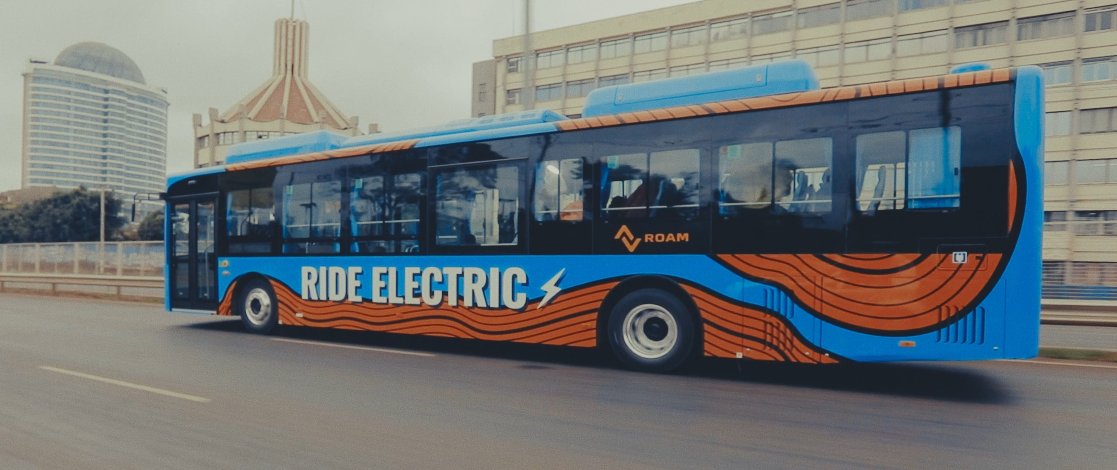- Kenya saw total electricity consumption under the electric mobility tariff category reach 1.80GWh in 2024, marking a 480.65% jump.
- During the year under review, electric vehicles hitting Kenyan roads increased by 41% to 5,294 units.
- Energy sector regulator says the halving of EV excise duty (20% to 10%), VAT exemptions for full-electric cars, and special e-mobility tariffs introduced in April 2023 are driving uptake.
East Africa’s largest economy Kenya is turning into one of the most exciting investment frontier in clean energy with latest statistics showing a steady increase in the adoption of green mobility systems.
In the latest industry statistics shared by the Energy Petroleum Regulatory Authority (EPRA), Kenya experienced 41 percent increase to 5,294 electric vehicles hitting Kenyan roads in 2024 compared to the 3,753 EVs that were reported in 2023.
This number includes two wheelers, three wheelers, cars and even buses during the period under review. As a result, EPRA saw the “total electricity consumption under the electric mobility tariff category during the review period reach 1.80GWh, marking a 480.65 percent increase compared to the same period in the previous financial year.”
According to Epra’s Biannual Energy and Petroleum Statistics Report Financial Year 2024/2025, behind these numbers lies a calculated government playbook:–
- Tax breaks that power demand: A halving of EV excise duty (20 percent to 10 percent), VAT exemptions for full-electric cars, and special e-mobility tariffs introduced in April 2023 are driving
- Infrastructure: From charging stations sprouting in Nairobi’s malls, pump stations and office blocks, to local assembly plants for electric motorcycles, a number of investors in Kenya are building the ecosystem necessary to power green mobility.
- Global alignment: The COP26 commitment to 100 percent zero-emission vehicles signals long-term policy stability – a rare green light for cautious investors.
At the moment, investors scouting for hotspots within this evolving industry can consider deploying ccharging infrastructure ventures, enhancing EV leasing models for boda-bodas, and battery recycling solutions.
Clean energy: Kenya’s Green Hydrogen sector
According to EPRA, while the world debates hydrogen’s viability, Kenya is already positioning itself as Africa’s green hydrogen hub. The 2023 Green Hydrogen Strategy is offering the country a $1 billion investment blueprint for potential investors, the report shows.
With nearly 90 percent of renewable electricity mix, comprising geothermal, wind, solar sources, Kenya can produce hydrogen at $2/kg, cheaper than a significant number of countries in Europe.
Additionally, the country’s 300 MW Olkaria hydrogen-ready geothermal plant and planned green ammonia exports from Lamu offer fresh avenues for investments, green jobs and monetization.
“Kenya launched its Green Hydrogen Strategy and Roadmap during the Africa Climate Summit… It sets ambitious impact targets, including securing at least $1 billion in direct investments by 2030, creating at least 25,000 direct jobs between 2028 and 2032, avoiding at least 250,000 tonnes of CO2 emissions annually by 2030, and producing green shipping fuels by 2030,” EPRA notes in part.
Furthermore, Kenya’s May 2024’s Hydrogen Guidelines provide something rare in emerging markets – rules on land use, water sourcing, and feasibility approvals that de-risk early-stage capital.
“These guidelines define sustainability criteria for green hydrogen, regulate land and water use, and outline procedures for approving expressions of interest and feasibility studies.”
Some of the smart money moves that investors can consider are the setting up of hydrogen-powered fertilizer production (cutting import bills), green steel pilots near Mombasa port, and transport fuel blending initiatives.
Read also: The unlikely hero? Public transport’s surprising role in EA’s green mobility shift
Autogas: A disruptor in clean energy transition
Lurking beneath flashier EV headlines, Kenya’s autogas sector is building a quiet empire. Ten new construction permits in 2024 signal growing confidence, but the real story is in the fine print:
- Tax Arbitrage Opportunity: Zero-rated LPG taxes make conversions increasingly economical as petrol prices fluctuate.
- Safety = Scalability: Proposed amendments to 2019 LPG Regulations address past safety concerns, this has been one of the missing piece for mass fleet conversions.
“Innovation continues to shape the sector’s future… the demand for autogas as an alternative transport fuel has gained traction, with 10 permits issued for the construction of autogas stations during the period under review,” notes EPRA Director-General Daniel Kiptoo.
Some of the target industries that can tap into this positioning are conversion kit manufacturing, LPG logistics for inland depots, and maritime bunkering partnerships at Lamu Port.
Crédito: Link de origem



Comments are closed.